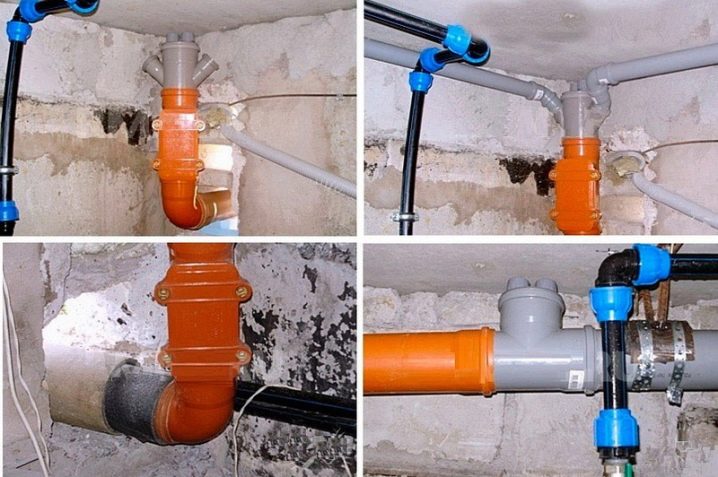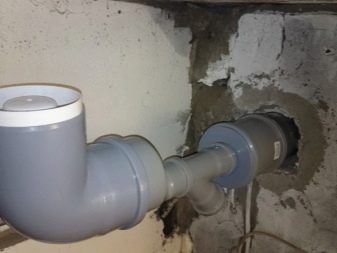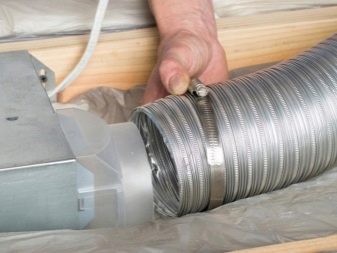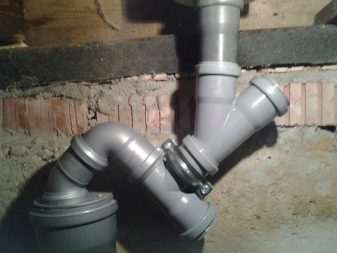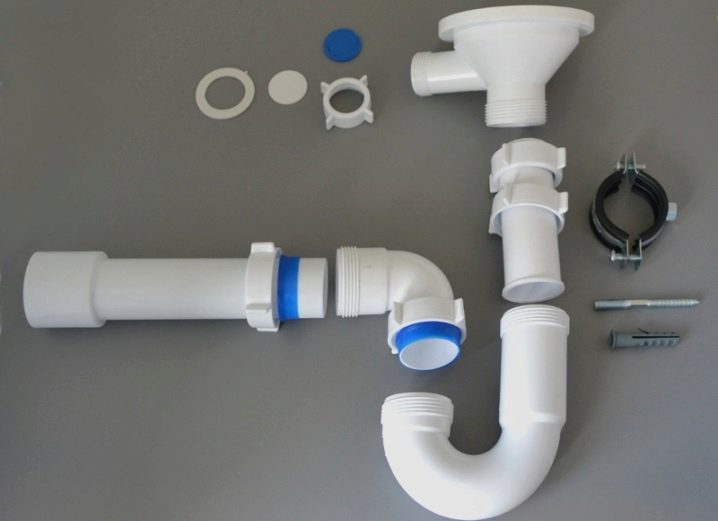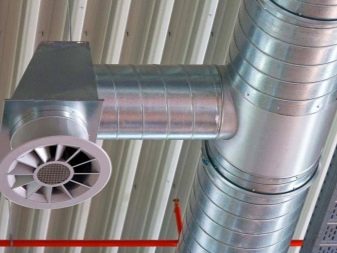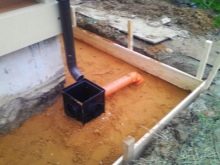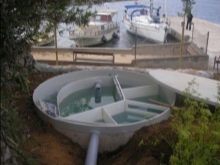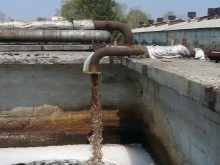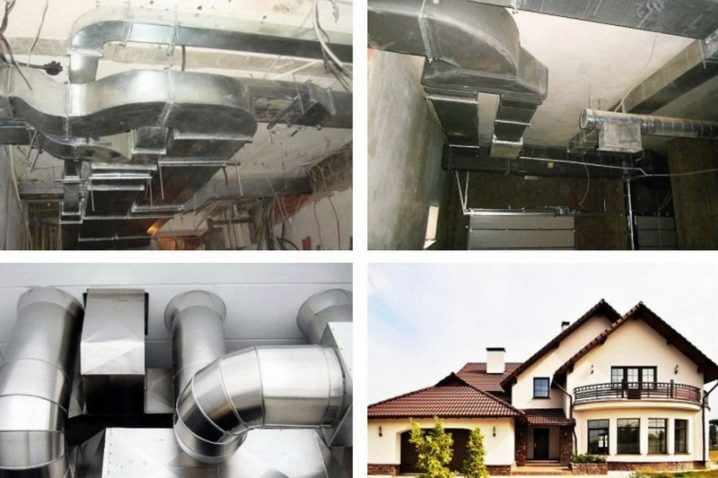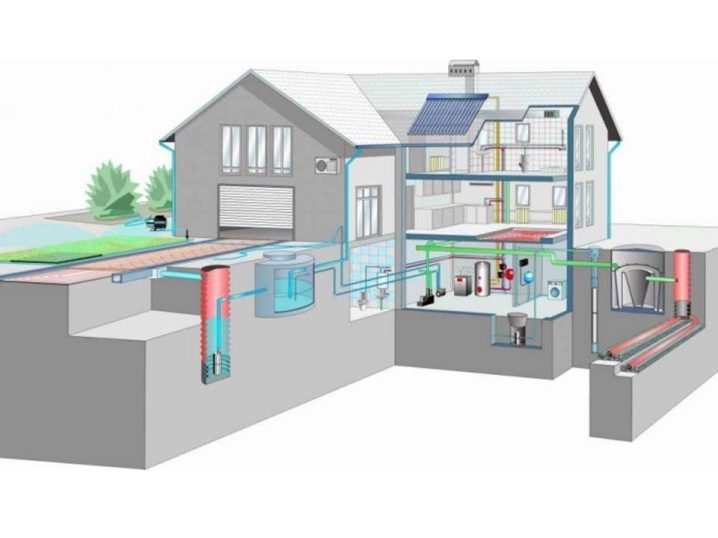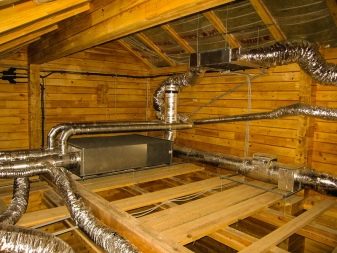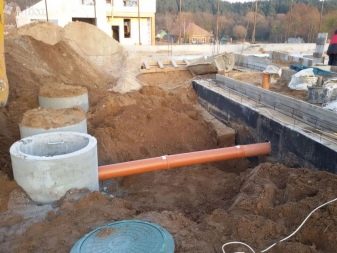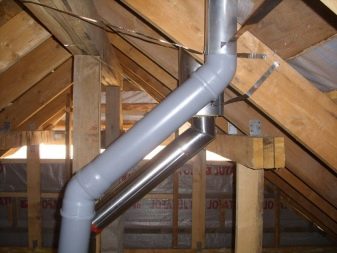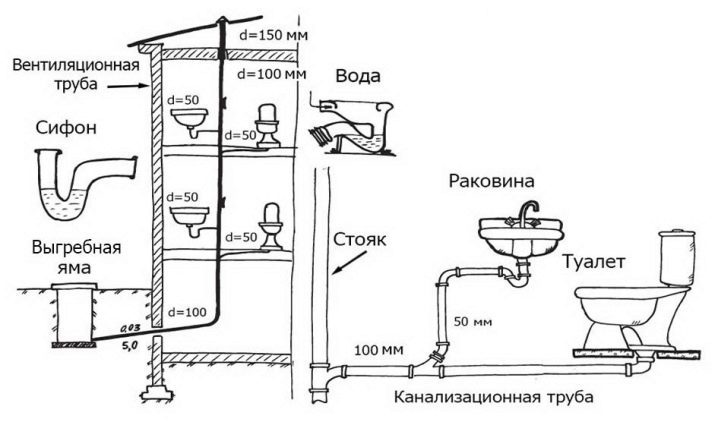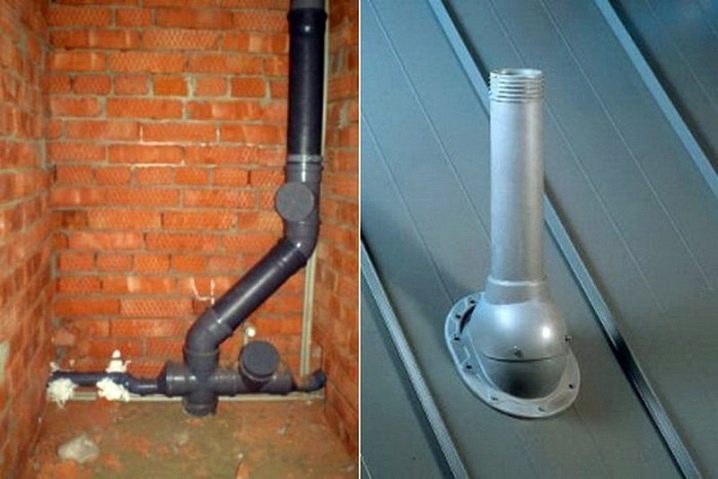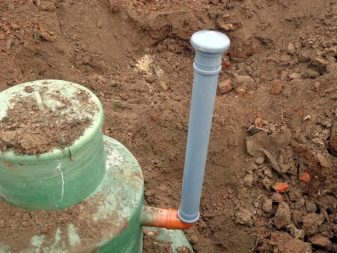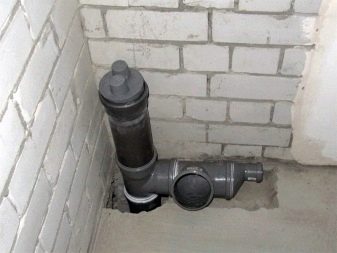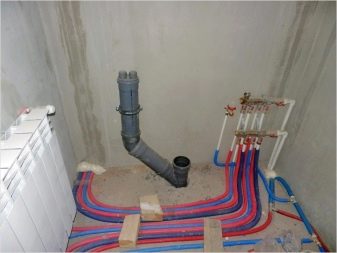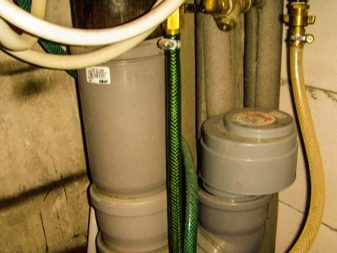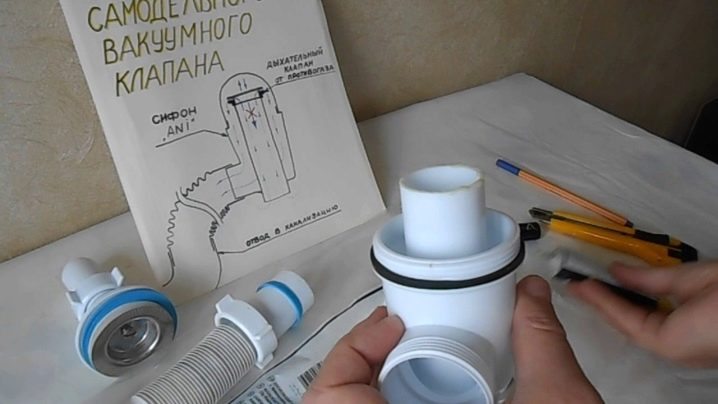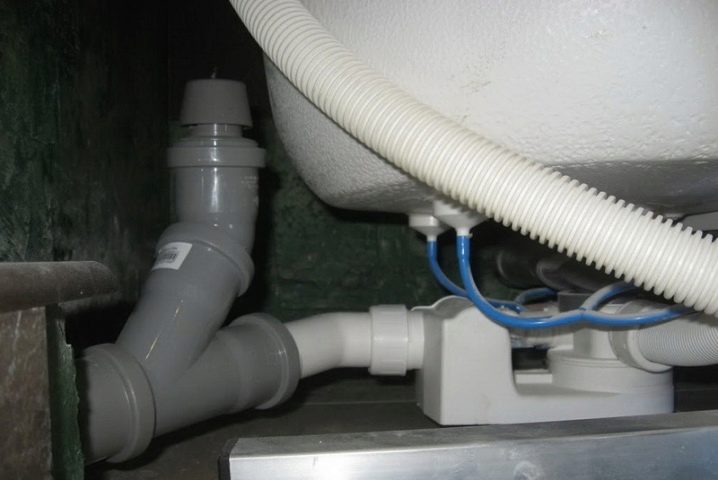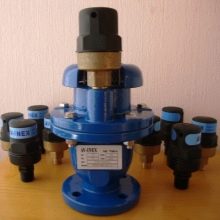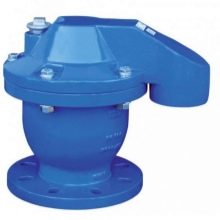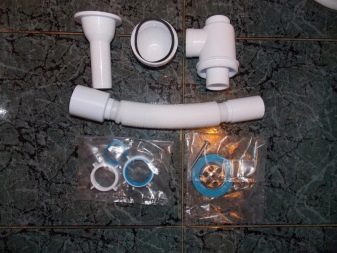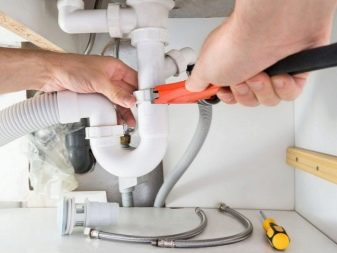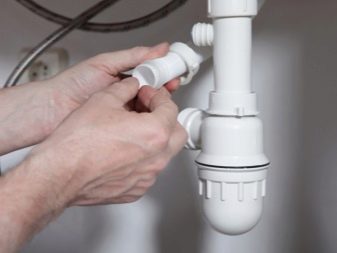Sewage ventilation: types, features of choice and installation

Ventilation for the sewage system is necessary in order to eliminate the bad odors that appear as a result of the removal of drains. If there is no ventilation, the occurrence of such "odors" simply cannot be avoided, as sewage pipes from all the existing sanitary structures of the house go through the sewer pipes.
What it is?
All plumbing equipment must be equipped with siphons - special closures for water. This is a separate element of the pipe, which is bent at such an angle that there is always a certain amount of liquid in it. It goes through all the pipes, but stops in a siphon due to its special design. Such a barrier prevents bad smells from entering the room.The device device depends on its type, and the principle of operation is based on the occurrence of a plug from the water, which will prevent smells from the sewage system from entering the living room.
All siphons in structure are divided into the following:
- bottle-view options;
- pipe;
- flat;
- corrugated.
The principle of operation and the siphon scheme are based on certain physical properties of liquid substances.
The product will work on the principle of a shutter for a liquid, namely:
- the lower part of the device has a special curved structure, which is why it will always contain wastewater;
- Because of this fluid, the required pressure level will be maintained in the pipe all the time, which will prevent bad smells and gases from entering the sewage system into the dwelling;
- to clean the siphon fit the same water that gets into it when using plumbing.
One of the main difficulties in using the siphon is the evaporation of water from it. This can happen if the plumbing is not used for a long time (approximately more than 10 days). This can be avoided by covering the drain hole with a special stopper. A siphon can be empty, even if it is used all the time - this means that it is assembled or placed incorrectly. Such errors lead to the filling of pipes and the occurrence of water jams.They will move down the system, while forming a vacuum at the top of the device. Due to rarefaction, suction of liquid from the siphon closures occurs. It is necessary to pour water into the siphon as soon as possible, otherwise it will be very difficult to get rid of extraneous odors.
The package of this device includes the following items:
- funnel;
- fasteners;
- hydraulic lock system;
- branch pipes;
- exit to the sewerage (section from 40 to 50 mm).
Ventilation for the sewer riser is difficult to imagine without elements such as a ventilation pipe and a deflector. These components help to regulate pressure surges when wastewater flows through the ventilation system. They allow even with 100% overlap of the entire pipe to avoid dilution. And also the parameters of the pipes must be either identical, or slightly more parameters of the risers. They should be placed in such a way that they would rise 0.5–1 m above the roof of the building. Sewer ventilation should not be placed next to the windows so that bad smells could not get inside the building.
If the ventilation cannot be mounted above the base of the roof, you can always mount it on a riser, which is located at a considerable distance from the area of drainage outside the boundaries of the building itself.Ideally, all existing ventilation towers will have devices such as baffles, as well as pipes for the organization of ventilation.
Kinds
The issue of ventilation arrangement for the sewage system often arises in relation to communications (drain lines) that are mounted inside buildings.
According to the classification of water flow, sewage systems are divided into such types as:
- household (they are also called economic);
- rain (or storm);
- production (more often they are called industrial).
Many projects of the arrangement of the ventilation of cottages are carried out under the autonomous type. Today, during the construction of real estate, its owners increasingly want to connect their sewers to more reliable centralized systems. For residential projects, you can choose the installation scheme of the sewer riser with a ventilation system, where the upper section of the pipe is located in the attic area. But this attic should be properly ventilated, which is rare for private buildings. For this reason, the most common is the scheme with the exit of ventilation pipes to the roof of the house.
Ventilation for a sewage system in a residential building is a complex system.
And to make it function as efficiently as possible, you need to adhere to the following rules:
- you need to correctly make all the calculations, choose the right number of risers and choose the right diameter of pipes;
- the installation of this ventilation is carried out only according to a specific scheme;
- the fan pipe is required, even if you want to install a valve of the vacuum variety;
- the output of this pipe should be through the roofing material;
- if this cannot be done, then the riser is placed next to the wall, which has an exit beyond the roof of the building;
- vacuum valve should be placed strictly in the attic.
In country houses, which are located in settlements without a single sewage system, they equip a system of withdrawal and collection of sewage of an autonomous type. For this purpose, septic tanks or concrete wells are used. They make it possible to partially process household waste of their owners, producing practically pure, so-called clarified water as a result of exploitation. In multi-apartment buildings, the problem of competent arrangement of ventilation of the entire sewage system is always very acute. The main requirement of this system is the installation above two meters above the apartment of the most recent top floor.
It is not always possible to do this, but experts offer the most appropriate solutions to the difficult problem, such as:
- the riser can be brought out of the roof of the building, as they did 100 years ago, when the number of floors of buildings allowed it;
- above the risers in the attic place special boxes that connect with the ventilation shaft;
- risers go out into the attic, and in it in one or immediately in a number of places the branch pipes are brought to the roof.
Accessories
Ventilation for sewage is designed according to a specific scheme in order to create acceptable conditions for the effective functioning of the sewage system itself. Today you can choose one of two possible options.
With fun pipes
It should be noted that there are certain standards for the installation of ventilation, and according to them Fan product must be installed necessarily in the following cases:
- if it is a multi-storey building, and the discharge points are located not below the first floor;
- if the parameters of the diameter of risers not less than 0.5 m.
Professionals note that when selecting valves, the ventilation system is no longer functioning as well as if it uses vent pipes.That is why fan ventilation is the best option, while the main thing is to properly place it in your home. The fan stand is basically a regular pipe through which the sewage of the whole house passes. Nowadays, plastic pipes are used more often, they are much cheaper, have a low weight, which guarantees ease of installation of the product. The diameter of the riser pipe is selected from the calculation so that it is not smaller than the size of the riser of the sewage system itself.
Risks with this can be collected in one common, if they are on a small metric area one from one. In another case, it is better to separate each of these risers. The collection of the ventilation system is carried out at the construction stage. A special channel with separate hatches for revision is being built under it. If pipes of different purposes come out through the roof, the end of the vent system should be placed above all others. If you place the deflector on the fan pipe, the performance of the system will not increase. So sometimes in this product there is no special need.
With vacuum vents
Vacuum-type valves are oversized device parameters, which are mounted anywhere in the sewerage system of a private structure: both on risers and on sections of pipes of the horizontal type. It is best to still choose risers. The device consists of a casing made of plastic; inside it is placed a branch pipe with such a diameter that it will fit the parameters of the pipes. A branch pipe on top will be supported by a special valve, which will be supported by a special spring. The place of a joint of branch pipes with valves should be 100% tight.
This device functions simply. Excessive pressure, which is created by water discharge, will pressure the valve to open. Through this valve, air must enter the system so that the pressure is level to the required level. As soon as the pressure level drops, the spring puts the valve in its place and the ventilation is closed. In this system there is one drawback - the valve with vacuum will not prevent the spread of bad odors from the sewage system into the dwelling, if the sanitary devices have a siphon.
It is necessary to take into account the following basic requirements for the placement of sewer aerators (this is another name for valves with vacuum):
- The aeration valve is located in well-ventilated spaces of non-residential type, ideally, this is most often the attic; if the installation takes place in a city apartment, you can use the toilet;
- installation height - as high as possible other plumbing fixtures;
- temperature - up to 0ºС;
- diameter of the pipes used is 50 or 110 mm.
Today, among the huge range of colors and design solutions, air valves are divided into 3 types.
- Kinetic. It is often referred to as anti-vacuum. It works only with a low level of pressure in the pipes. The main task of this aerator is to stop a significant amount of air at the same time when the sewage system is filled with waste liquid or when the pipeline is being cleaned.
- Auto. The main purpose is the removal of accumulated air from the sewage system. Efficiency of this type will not be able to hold a more significant head than air. This aerator is enough only for a small cottage.
- Combined. The efficiency of this kind of design will be based on combining the effectiveness of the use of aerators with automatic and kinetic design.
How to choose and install?
If you have long wanted to place an aerator in your house or apartment with your own hands in a high-rise multi-story building, you must first tell your neighbors about this fact. After that, you need to turn off the water. And you can begin work associated with the installation. First, a piece of pipe is cut in the place where it is planned to place the aerator. On the riser device is placed at the top. If the product is on the pipe that separates the sewage from the plumbing, you need to choose the right direction of installation of the product. It is possible to install the valve in a pipe with use of branch or a tee.
To correctly install the siphon with your own hands, you need to adhere to the following algorithm:
- siphon should be properly assembled according to the scheme;
- put the corrugated ring of the sealant on the siphon nozzle with the strips facing up, and tighten the remaining ring under the metal grill;
- now the siphon is placed under the sink sink, while the product is neatly supported and accurately aligned, and a grill is installed on top of the sink itself;
- the screw is screwed into the lattice and it will only need to be tightened with a screwdriver.
Tips
If there is no knowledge of the types of aerator, then you should seek help from an experienced master plumber. It is he who will tell about all the significant advantages that this device has and how it will improve the work of the sewer system in the dwelling. The organization of the sewer ventilation of an ordinary house should be approached, taking into account certain requirements that will allow the device to serve more effectively.
These requirements include the following:
- the exhaust pipe must be located at least 1 meter above the roof;
- if it is planned to place more than one sewer riser in one’s own house, which will be combined into one pipe, then it is best to build them from pipes with the same diameter;
- caps on the top of the fan devices are not mounted, so that condensate does not appear on them in the cold, which may come from warm gases — otherwise the process of pipe clogging may begin;
- the ventilation system is an autonomous circuit, therefore it cannot be combined with both the general ventilation system of the entire building and the ventilation of the chimney;
- from the windows and the balcony this pipe can be placed not less than 4 meters;
- You should not place a funnel pipe near the roof overhang, as it will quickly collapse from various kinds of precipitation, the best installation option is through the roof on the roof.
A siphon that has a jet gap will protect it from any harmful microorganisms that may appear there. According to the regulations of this kind of design are required for placement in catering establishments. An air trap that provides for an air gap in the sewage system will have a small gap between the discharge of the fluid and the pipe that receives the drain. Direct access of water to the sewage network is not allowed with the structure of the siphon used. The liquid will flow into the funnel, and only then into the pipe. The installation of such a device should be an experienced specialist.
For information on how to make sewage ventilation in a private house, see the following video.

